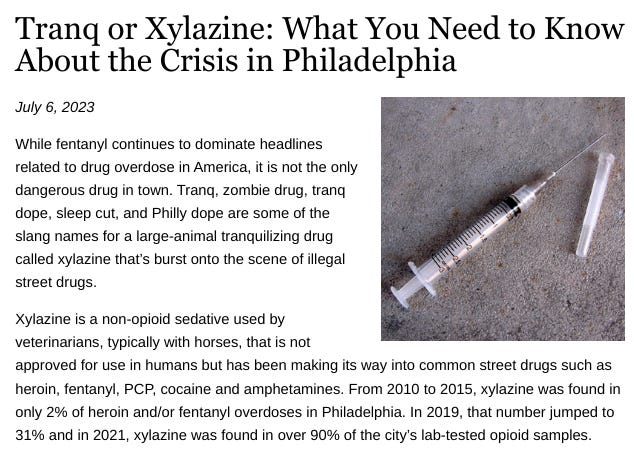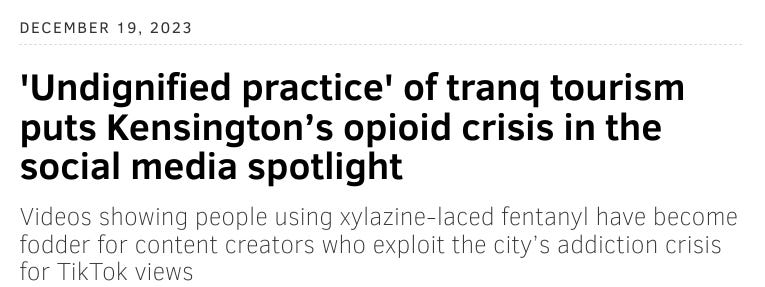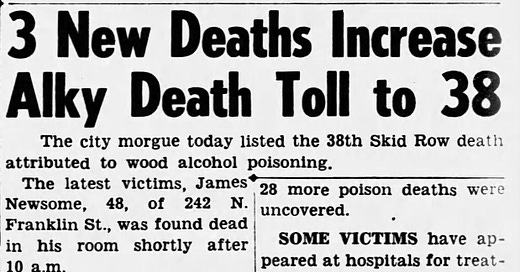The Search for the Sterno Killer
And some thoughts on today's crisis in Kensington, Philadelphia
If you haven’t heard this week’s episode yet, check it out on your favorite Podcatcher or Youtube.
The deaths of over 30 people over the Christmas holiday in 1963 were big news, even if they all happened in Philadelphia’s Skid Row.
The above numbers eventually went down to 31 after some of the deaths were determined to be from natural causes.
Given that when someone was found with Sterno for the purposes of drinking, they would be arrested, as well as whoever sold it to them, it isn’t overly surprising that the police struggled to find people to work with them.
Furthermore, we must remember the relationship people in Skid Row would have had with the Philadelphia Police Department.
Also, notice the terminology used for the people of Skid Row. It is pretty shocking to our 21st-century eyes to see a newspaper so casually use terms like “Alky” and, as in the article below, “derelicts.”
We cannot say for sure if the store “near 8th and Vine” mentioned at the bottom of the article was Max Feinberg’s store, but I can’t help but think it probably was.
As we know, Feinberg’s store was found to be the source of the lethal cans of Sterno. He was facing some pretty serious charges, even outside manslaughter.
Interestingly, his charges under the Pharmacy Act of 1962 were eventually dropped. Still, it did create an interesting situation when he started trying to get pardons at the end of the decade.
The case had gone to the state courts because of the Pharmacy Act, but without the Pharmacy Act charge, Feinberg’s lawyer said that there was a miscarriage of justice.
The Judge disagreed.
What I find so interesting about the above article is that, seven years later, Feinberg is still getting top billing in the newspaper.
Today, in Philadelphia, as well as cities across the United States, street drugs are being cut with any number of substances that cause terrible side effects or death.

Xylazine in Philadelphia’s heroin supply is hardly big news. To take away even more from the problem, there is no face to associate with this crime. We don’t have a Max Feinberg to blame for making an already risky activity potentially lethal.
Also, while those newspapers in 1963 used dehumanizing language for the people impacted by the industrial strength Sterno, it is nothing like the dehumanization we see today.

The solution to this crisis will be long and complicated. Anyone telling you otherwise is probably trying to sell you something. But a key piece is that we must see the people struggling with addiction and poverty as whole human beings. When people die, they should be treated, at the very least, like the Skid Row Sterno dead, as victims of a crime.







